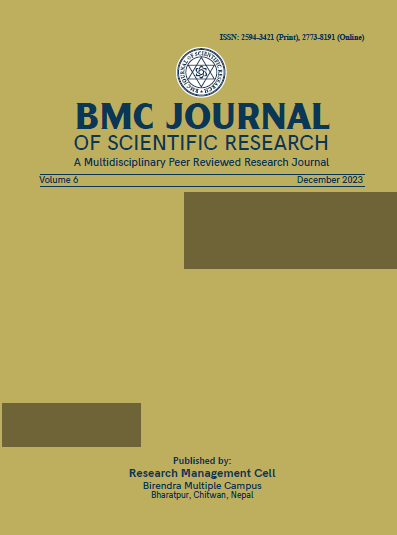Surface Tension of Liquids (Water, Chloroform and Acetone) by Capillary Rise Method
DOI:
https://doi.org/10.3126/bmcjsr.v6i1.60948Keywords:
capillary tube, surface tension; liquid (Water, Chloroform, Acetone)Abstract
Surface tension is a crucial property of liquids that depends on the liquid's composition. This study aims to compare the surface tension of water, chloroform, and acetone using the capillary rise method. It involves using a capillary tube with a known radius, dipping it vertically into a liquid, and measuring the height to which the liquid rises in the tube. The surface tension of the liquid can then be measured experimentally. This relates to height of the liquid in the tube, the radius of the tube, and the surface tension of the liquid. The height of the liquid in the tube is dependent on the radius of the tube, with a smaller radius resulting in a greater height. The surface tension of the liquid is inversely related to the radius of the capillary tube.
Downloads
Downloads
Published
How to Cite
Issue
Section
License
Copyright (c) 2023 Research Management Cell, Birendra Multiple Campus

This work is licensed under a Creative Commons Attribution-NonCommercial-ShareAlike 4.0 International License.




